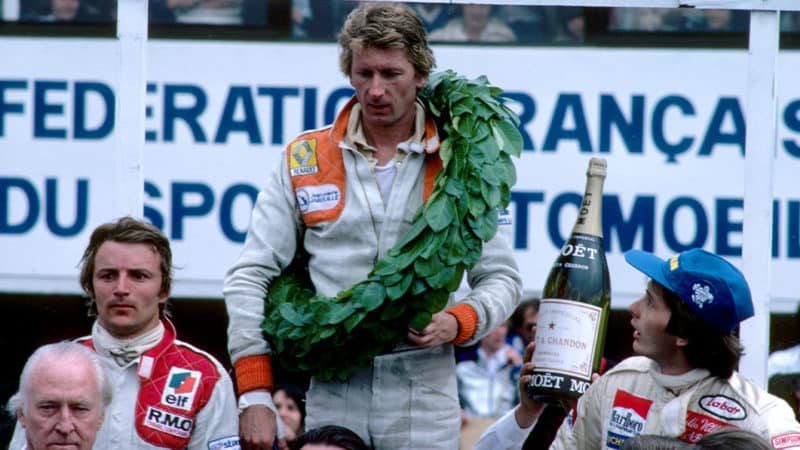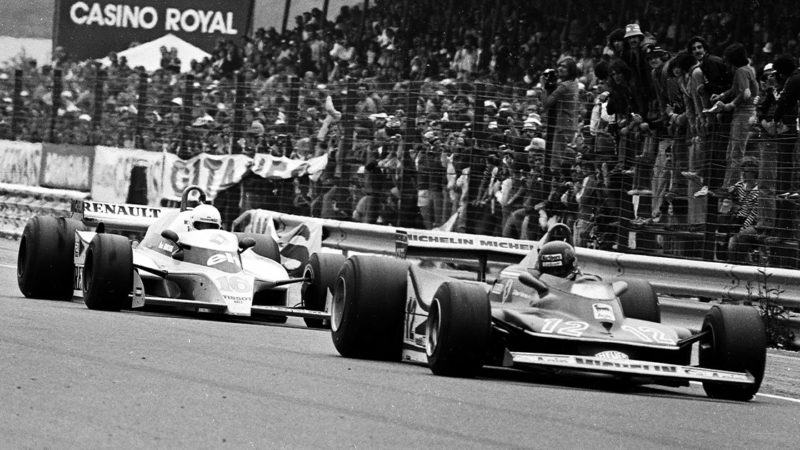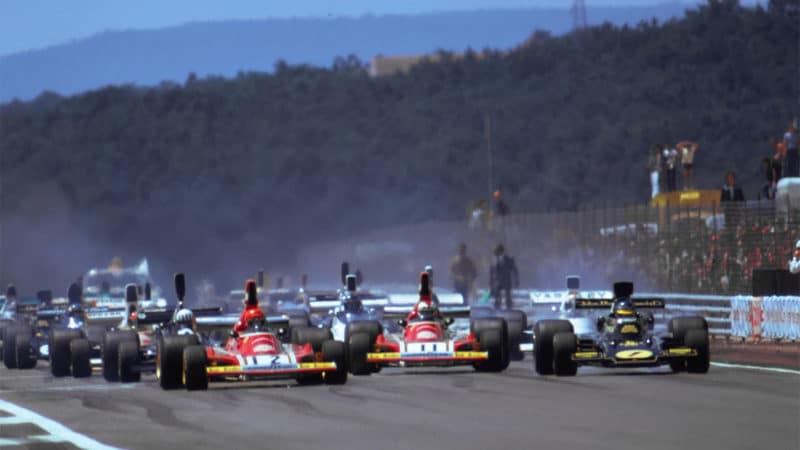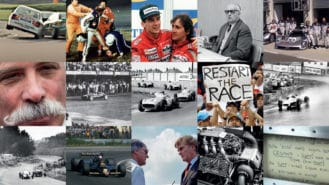The truncated Dijon was used again the following year, for the non-championship Swiss GP, and an extra loop was incorporated in 1976, ahead of the French Grand Prix’s return the following summer. Jenks: “A magnificent increase of 511 metres, and some 14 seconds to the lap time! For all its smallness and ‘village circus’ atmosphere the end result was pleasant enough, especially if you have never experienced anything better. For the Formula 1 race of France, it was more or less adequate and any shortcomings were more than made up by the arrival of summer in the very pleasant countryside of Bourgogne.”
Mario Andretti scored an inherited victory for Lotus in 1977, after John Watson’s Brabham ran dry in the final moments and coasted across the line with a dead Alfa flat-12, and there would be only four more world championship grands prix thereafter: three French (1979, 1981 and 1984) and one Swiss (1982, when Keke Rosberg scored the only victory in the year of his coronation).
One of those, though, was among the most significant in world championship history. It is best remembered for the stirring second-place duel between Gilles Villeneuve (Ferrari) and René Arnoux (Renault), whose approach to the task in hand would nowadays have led to a fortnight of post-race investigations. From where I was sitting, watching the highlights on a small portable TV in Cheshire, it looked like two blokes capitalising on abundant car control and boundless mutual trust to illustrate just how exciting racing could be – and my feelings about that have never changed.

Arnoux (left) and Villeneuve (right) would provide the fondly remembered fireworks in ’79, as Jabouille took victory
DPPI
Up the road, meanwhile, Arnoux’s team-mate Jean-Pierre Jabouille was stroking his way to a comfortable victory. Two years on from Renault’s first grand prix start of the modern era, it was apparent that its turbo V6 was not the blind alley certain rivals had predicted but a wake-up whistle, a signpost to grand prix racing’s future technical direction.
Dijon’s place in grand prix history has thus been brief but significant. It’s unlikely Liberty Media will consider Vettel’s suggestion, but should ever it do so it would be well advised to sit back, enjoy a few bottles of the local produce and leave the circuit untouched.
It’s fine just as it is.



